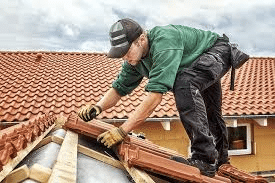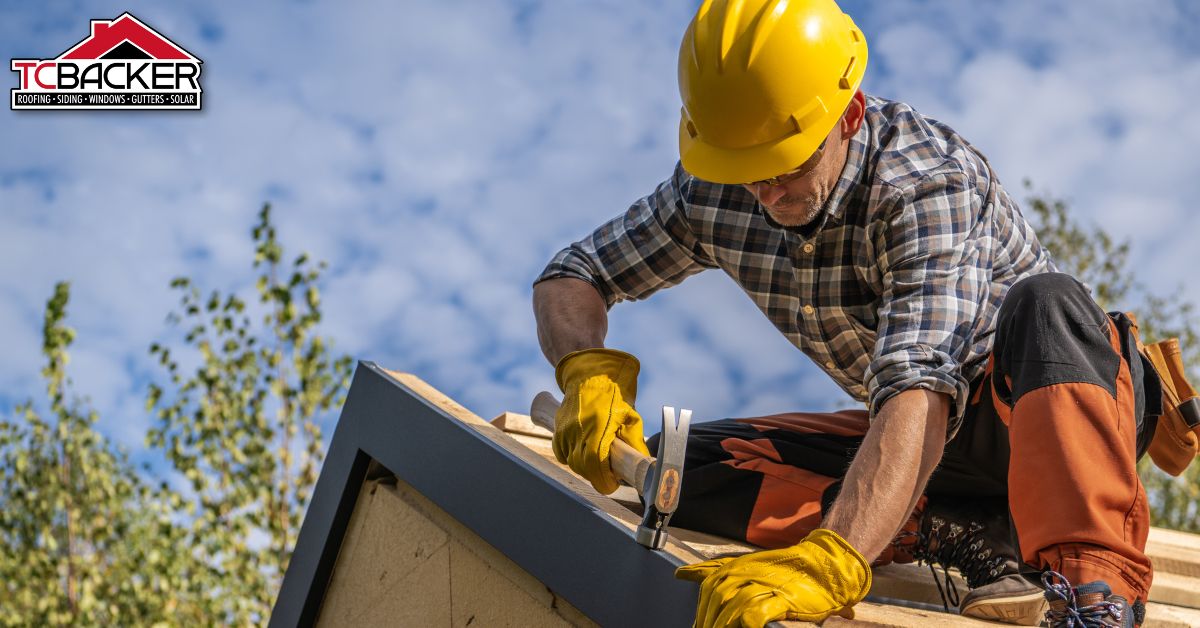Cleveland Roofing Specialists: Top Roofing Solutions for Homes and Businesses
A Comprehensive Guide to Effective Roof Covering Flat Roof Installment
The complexities of flat roof installment demand a careful approach, beginning with an extensive understanding of various level roof covering kinds and the crucial products required for ideal performance. A successful installment pivots not only on the option of materials but also on the prep work and implementation of each step associated with the process. As we discover the crucial stages from prep work to upkeep, it comes to be apparent that forgeting even small information can significantly influence the roof covering's long life and effectiveness. What details methods can ensure a smooth installment that stands up to the test of time?
Recognizing Flat Roof Covering Types
When considering level roof coverings, it is important to understand the different types offered, as each deals distinct advantages and disadvantages tailored to certain requirements. The most common kinds of level roofs include Built-Up Roof (BUR), Customized Bitumen, and Single-Ply membrane layers.
Built-Up Roof covering includes multiple layers of asphalt and gravel, supplying exceptional longevity and climate resistance. It is specifically useful in locations vulnerable to serious weather however may need even more upkeep because of its intricate building and construction.
Customized Asphalt is a preferred option for its simplicity of setup and flexibility. It usually uses a torch-applied or self-adhesive approach, which can be useful for fast repair services and long-lasting efficiency. Its life-span can be much shorter contrasted to BUR.
Single-Ply membranes, including Thermoplastic Olefin (TPO) and Ethylene Propylene Diene Monomer (EPDM), are recognized for their lightweight nature and energy performance. These products are usually chosen for industrial buildings as a result of their cost-effectiveness and ease of setup (Cleveland Roofing Specialists). They may not give the very same degree of insulation as various other alternatives.
Each roof type requires cautious consideration based on environment, spending plan, and details job needs.
Essential Materials for Flat Roof
A range of necessary products are critical for the effective installation of flat roof. The selection of materials straight effects toughness, efficiency, and overall performance.
One of the primary products is the roofing membrane layer, which can be created from different compounds such as thermoplastic polyolefin (TPO), ethylene propylene diene monomer (EPDM), or PVC. Each type uses distinct advantages, including UV resistance and adaptability, which are essential for extended performance.
In addition to the membrane layer, insulation products play a substantial function in energy performance. Rigid foam boards or polyisocyanurate insulation are prominent choices, as they supply excellent thermal resistance and dampness management.
Moreover, roof covering adhesives and sealants are crucial for guaranteeing a water tight installation. These items have to be compatible with the picked membrane to stop wear and tear with time.
Getting Ready For Installation
Proper prep work is vital for an effective level roof installment, as it lays the foundation for a resilient and effective roof covering system. Begin by performing a thorough evaluation of the existing roofing system framework.
Next, gather all necessary tools and products, guaranteeing that they satisfy industry criteria. This consists of water-proof membranes, insulation, blinking, and bolts. Familiarize on your own with the maker's specs, as adherence to these guidelines is vital for guarantee purposes.
Think about climate problems; stay clear of installation during heavy rain or severe temperature levels, which can affect material efficiency. By taking these primary steps, you can improve the possibility of a successful flat roof setup that satisfies both architectural and visual requirements.
Step-by-Step Setup Process
With the foundation established through detailed prep work, the following stage entails performing the flat roofing system setup methodically. Begin by ensuring that the architectural deck is tidy and cost-free from debris. Next off, mount a vapor obstacle to stop wetness buildup underneath the roof covering material. This step is important for keeping the roofing's stability in time.
Following the vapor obstacle installment, put down insulation boards, ensuring they fit securely with each other to lessen thermal bridging. Protect the insulation with appropriate bolts based on next the roof kind and regional building regulations. As soon as the insulation is in area, it's time to apply the roof covering membrane layer. Relying on the chosen product-- such as TPO, EPDM, or customized asphalts-- mount the membrane layer according to the maker's specifications.
Set up blinking around perimeters, vents, and any kind of roof covering infiltrations to improve waterproofing. After installation, conduct a thorough evaluation to determine any type of prospective concerns prior to ending the task, ensuring a robust and trusted flat roofing system.
Maintenance Tips for Longevity
Regular maintenance is necessary to guarantee the longevity and efficiency of a flat roof. One of the key jobs is to carry out routine inspections at the very least two times a year, preferably in spring and loss. Throughout these assessments, search for indicators of wear, such as sores, fractures, or pooling water, which can show underlying concerns.

Ensuring correct drainage is vital to avoid water build-up. Examine and clear seamless gutters, downspouts, and scuppers to ensure unhampered water flow. In addition, check seals around vents, skylights, and various other infiltrations for any kind of signs of wear and tear, using caulk or sealer as required to keep a watertight barrier.
Finally, take into consideration professional maintenance services every few years for comprehensive maintenances. By adhering to these upkeep tips, you can significantly prolong the life of your level roofing, guaranteeing it stays a reliable shield against the elements.
Conclusion
Effective flat roof setup requires a methodical approach encompassing comprehensive assessments, product choice, and careful preparation. Sticking to the detailed actions throughout the setup process makes sure the correct application of roofing membranes and insulation while boosting waterproofing with find out here efficient flashing installment. Executing routine upkeep practices significantly adds to the durability of the roofing i loved this system. By adhering to these guidelines, a durable and dependable level roof covering option can be achieved, efficient in standing up to numerous environmental conditions.
The details of flat roof covering installation demand a thorough approach, starting with an extensive understanding of numerous level roof types and the necessary materials needed for optimum performance.Proper preparation is necessary for a successful flat roofing installment, as it lays the foundation for a reliable and sturdy roofing system. After setup, conduct a comprehensive inspection to identify any prospective problems before wrapping up the job, making sure a dependable and robust flat roof system.
